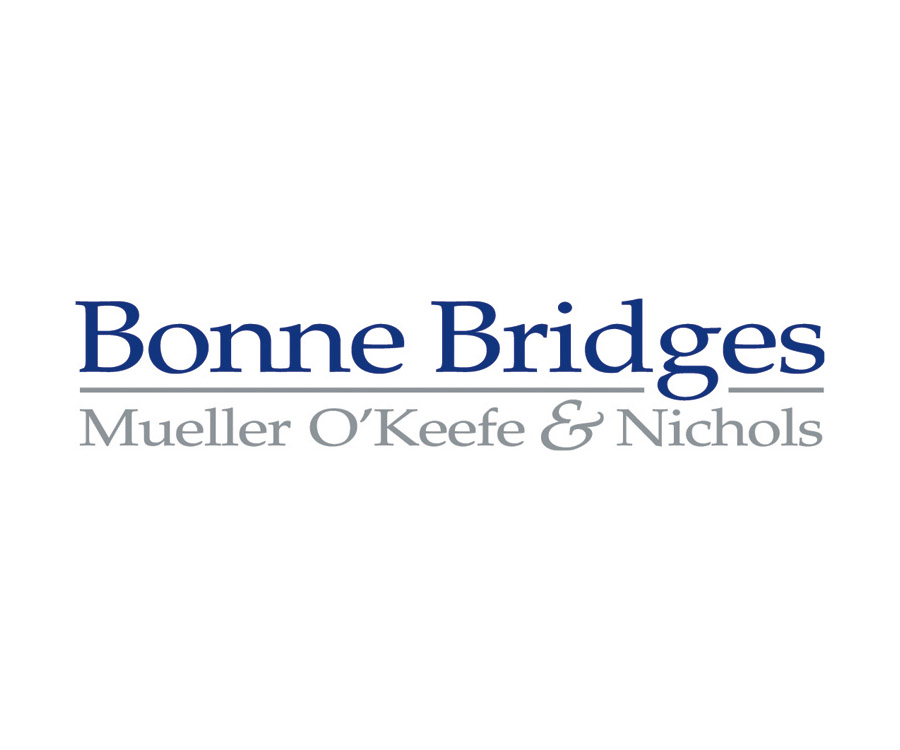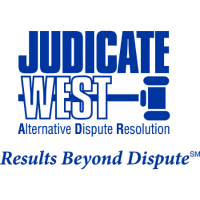By Constance A. Endelicato
Partner – Wood, Smith, Henning & Berman LLP
In the United States, 15% of our population is comprised of individuals over 65 years of age. That translates to approximately, 47.8 million people and as longevity continues to rise, so will that number. As an example, our aging population increased by 1.6 million between 2014 to 2015, alone. Over 5% of those over age 65 are residing in skilled nursing facilities or residential care facilities for the elderly.
The unfortunate reality is that with age, comes accidents and illnesses. Approximately, one-third of all adults over the age of 65 will suffer a fall and once they suffer a fall, two-thirds will suffer a second fall within six months. It follows that falls are the leading cause of death from injury among people 65 and older. The incidence of hospitalized individuals over the age of 65 with a principal diagnosis of pressure ulcer is 56.5%, while 72% are hospitalized with a secondary pressure ulcer diagnosis. Immobility, such as lying in bed or sitting in a chair for long periods of time, can lead to undue pressure and skin breakdown at areas of bony protuberances such as the coccyx, sacrum, and heels. Co-morbidities such as low body mass index, poor perfusion, renal failure, and diabetes, all increase the risk of pressure sore development.
Not surprisingly, the most frequent subjects of litigation sounding in Elder and Dependent Adult Abuse and Neglect are falls and pressure ulcers. Elders are typically defined as individuals who are 65 or older, while dependent adults are defined as individuals between 18 and 64, who have physical or mental limitations that restrict their ability to carry out normal activities or to protect their rights. This can include a person who is admitted as an inpatient to a 24-hour health facility.
The intrigue of Elder and Dependent Adult Abuse and Neglect claims primarily stems from the enhanced damages available to plaintiffs and their attorneys including penalties, punitive damages, and attorneys’ fees. As an added incentive, there typically is no cap on non-economic damages, even in those states such as California, that have caps in actions against healthcare providers, leaving an unlimited amount of non-economic damages to add to the verdict or settlement. Plaintiffs’ lawyers are motivated by the collection of attorneys’ fees and can readily rack up an average of $800,000 to $1,000,000, in fees prior to trial, with little evidence required to establish fee rate. Beside the economic advantage of collecting inflated fees and funding of the suit in this regard, naturally, opposing counsel are also eager to establish necessary elements to warrant penalties and punitive damages.
A key cause of action and one that is very popular due to the attached enhanced remedies, is based upon The Centers for Medicare’s Patient’s Bill of Rights. There are 57 “rights” to which a resident of a skilled nursing facility is entitled and if a single right is violated, plaintiffs may seek punitive damages and attorneys’ fees along with statutory penalties. The rights range from the right to be treated with respect, participate in activities, express complaints, and make private phone calls, to the right of access to nutritious meals and healthcare.
With 57 rights to choose from, in nearly every case, plaintiff will be able to support such cause of action. In one local Superior Court case, the plaintiff brought an elder abuse action which included a cause of action for Violation of Patient’s Rights stemming from the placement of the paper towel dispenser near the toilet in his private bathroom. Plaintiff alleged that this violated his right to a safe environment and sought enhanced damages.
Our state Supreme Court is currently reviewing Jarman v. HCR ManorCare, Inc., an Appellate Court’s decision that contradicts earlier precedent and, if upheld, will afford residents a new avenue for seeking punitive damages and increased penalties against skilled nursing facilities. In Jarman, a skilled nursing resident brought suit alleging that he sustained injuries while convalescing from a broken leg. California Health and Safety Code 1430(b) provides recourse for violation of resident’s rights, while limiting remedies to a penalty of up to $500, attorneys’ fees and costs, and injunctive relief. The statute has previously been interpreted as providing up to $500 “per action” with no punitive damages allowed.
In Jarman, the 4th District Court of Appeal upheld recovery for $500 “per violation” and found that punitive damages were warranted, despite the trial court’s determination of insufficient evidence of malice, oppression, or fraud. In Jarman, the jury found there to be 382 violations of the resident’s rights at issue during a three month stay. The Appellate Court held that that the number of violations constituted a “conscious disregard” for patient safety. Thus, warranting punitive damages. Although, the Health and Safety Code statute applies only to skilled nursing facilities, one concern is that the statute is similar to statutes governing other facilities, including acute care hospitals. Not surprisingly, in October 2018, the Consumer Attorneys of California, among other organizations, filed Amici Curiae Briefs in support of the stiffer penalties and punitive damages, while defense counsel nervously awaits the Supreme Court’s ruling.
Notwithstanding the potential penalties, the attorneys’ fees can be the gravamen of these suits from the perspective of the plaintiffs’ counsel. Their tactic is to bulldoze the defense with numerous motions and hundreds of discovery requests and deposition notices. Hence, the potential exposure even without punitive damages can be exorbitant.
Arizona’s “elder abuse” laws include an even greater avenue of damages. In 2013, an Arizona Court of Appeal, ruled that elder abuse litigation was not limited to skilled nursing and assisted living facilities, but also includes acute care hospitals. Again, further evidencing a potential trend to extend the enhanced damages and penalties beyond the skilled facility. Further, the state’s elder abuse laws allow the prevailing party to claim recovery of all out-of-pocket costs, including expert witnesses and cost of investigation. The potential exposure creates a barrier to defending these actions and most will forcibly end in settlement.
Granny Cams
Additionally, with the advent of the “granny” cam, video evidence of either blatant abuse or neglect and lack of attention is being caught on tape. More and more states are enacting legislation to allow either hidden or known cameras in patient rooms. These videos are being used more frequently in litigation and whether they are disclosed at the outset of litigation to encourage early resolution or used as impeachment, the case is most arguably, indefensible with such graphic surveillance.
It follows that granny cams are garnishing much debate between the nursing home industry and patient advocates. The nursing home industry opposes such surveillance as at creates privacy and HIPAA concerns, deflates employee morale, and results in increased overhead costs. Advocates in favor of the cameras argue that such cameras are a means of discouraging abuse and neglect and in essence, will improve quality of care.
Certain states such as Texas, Washington, and Illinois, require granny cams to be installed by the facility if requested by the resident’s family. It is a resident’s choice, not a choice of the facility and the resident is responsible for the cost and signage of the surveillance must be posted rather than a covert usage. Other states, such as Pennsylvania, allow a resident to install a hidden camera without the facility’s knowledge. New Jersey adopted a recent program known as the “Safe Care Cam” which enables family members who suspect abuse or neglect of their resident family member, to have access to micro-surveillance cameras that can be readily installed to detect abuse. The camera and its memory card are loaned to the resident for a period of thirty days and extended upon request.
With the advent and growing trend in the use of granny cams, we can anticipate the impact it will have on litigation.
Claims and Litigation Considerations
When faced with litigation involving demonstrative evidence of the perpetrator caught in the act, one must consider the facts as a whole to determine the circumstances of the incident. One must investigate whether the incident was initiated by the victim and explore whether there are any facts favorable to the defense. An evaluation of the parties must be considered to determine credibility. It will be important to determine whether the plaintiff will be credible and whether he or she will elicit sympathy. While the elderly and dependent residents comprise a special class and will nearly always stimulate emotion, the family members or heirs to the action may negatively impact the cause if they are not credible in their claims. As shocking as it may seem, there are known instances where photos have been staged by family members for financial gain.
One must also determine whether the venue is one that will be favorable or a danger to the defense of the case. Some venues may be more “plaintiff-oriented” and certainly may award runaway verdicts. If there is an arbitration contract, consider whether enforcing the agreement will provide a better and less costly result versus a jury trial.
Early mediation is the best remedy in the face of damaging evidence. Careful selection of a mediator for settlement purposes also will be essential to ensure that the defense has a neutral person who will be strong enough to influence the party with client control issues. Certainly, one who will be neutral and less intrinsically offended by the deed or one who is not known to favor plaintiff, will always be a better match for these types of cases. Consideration of early resolution also comes to play in effort to avoid discovery and to prevent the tortfeasor from rendering self-incriminating testimony. One must also attempt to curb the discovery process to keep other damaging evidence out of the conversation. Oftentimes, we may find that the perpetrator had a negative background or may have left employment on hostile terms.
Additionally, it will be important to determine whether there exists a coverage issue. Coverage counsel should be consulted to determine whether a viable reservation of rights exists. Many opponents will argue agency or respondeat superior theories against the employer and thus, such additional defendant may not escape the lengthy and costly litigation process. Further “course and scope” arguments typically fail in this arena. Providers certainly are not trained to behave badly when providing care to residents, yet aggressive behavior, using unlawful restraints, verbal humiliation, and the like, are all considered to be conduct that is rendered “during” the course and scope of the provider’s care for the resident.
A strong PR team is necessary in the case of a YouTube viral video. However, once the offending action is exploited on social media, an individual perpetrator will have a difficult time gaining employment in a same or similar field. It can also result in criminal charges and potential licensure suspension, among other detrimental consequences. Cumis counsel may also be required.
When a health facility is involved, speedy measures to ensure that the tortfeasor has been separated from employment and that training of all other employees is instituted. Branding guru, Starbucks, expeditiously terminated an employee who was caught arguably discriminating against innocent patrons. Starbucks shut down all of its stores for a period of time to initiate anti-discrimination ant- harassment training. The incident was quickly forgotten due to the swift and very public corrective action taken.
In further attempt to mitigate damages, one must focus on the resulting damage. Physical harm versus emotional harm, however, can be just as costly in the face of litigation. In one cell phone video, the victim is being ridiculed and humiliated with no physical harm, but yet still received a settlement in a six-figure amount. The victim and circumstance will also play a role. The above scenario can yield seven figure settlements if the victim is elderly, ill, or otherwise falls into a special class of protected individuals pursuant to the ADA.
Risk Management Considerations
It is imperative to focus on risk management strategies for awareness and prevention, as well as to conduct an analysis of claims exposure so that one can develop a plan for mitigating damages when faced with this damning evidence. If employees are aware that surveillance cameras exist throughout the common areas, it is assumed that the employee would work to his or potential and that negligent or intentional behavior will be curtailed. However, this surprisingly is not always the case. Thus, supporting the premise that those who have the propensity to act recklessly or intentionally, will do so, with or without the risk of incriminating photographic or videographic evidence.
In attempt to prevent offending and inappropriate activity, careful screening during time of hire is essential. A recitation of references does no good unless one proactively contacts the references. Use of Web services to run background checks also is useful. Once hired, training as to a “no tolerance” policy is a must.
Orientation, along with ongoing in-service training on the topics of ethics, anti-harassment, and anti-discrimination is necessary. Those in leadership roles must establish a culture of compassion and patience with this special patient population. Providers should be encouraged to report incidents, no matter how benign. These incidents must be investigated, reported, and monitored for tracking and trending. Doing so, can result in determination of the root of the problem. Routine meetings should include discussion of challenges faced by the provider. Allowing the care provider to voice concerns and share moments of personal frustration, will enable supervisors to spot issues and otherwise assist in problem solving to avoid escalation. In turn, it is also essential to provide supportive measures to ensure that the providers feel appreciated and understand the value of their care. Consider employing a reward system for those who go above and beyond, to foster goodwill with residents and their families.
Once litigation is initiated and the demonstrative evidence is leaked, Risk Management must engage in tactics to mitigate social media attack. Quick reaction, acknowledgment of responsibility, and no tolerance, as well as the plan for corrective action, are the essential ways to deflect the negative press attached to shocking ill behavior caught on tape.
Conclusion
The widespread availability and use of cell phones and surveillance cameras makes the risk of catching the unthinkable abuse and neglect a reality. Establishing positive culture, providing screening and training, mandating reporting, and nurturing our residents as well as our care providers, are all essential in risk prevention.
A picture is worth a thousand words and in elder abuse litigation it can translate to thousands, if not millions of dollars. With the ever-changing laws and the increasing damages potential for plaintiffs and their attorneys, we can expect the number of elder abuse claims to continue to escalate. Implementing a plan of prevention and preparedness in risk management and thoughtful strategy in litigation, will help abate the number of claims and damages.
About the Author
Constance is a trial lawyer with over 25 years of litigation experience in defending healthcare professionals and has successfully tried over 60 jury trials, never having been defeated. She is a member of the prestigious American Board of Trial Advocates. She has earned the recognition of Super Lawyer in Southern California and in Orange County from 2010-2017 and has been recognized by Los Angeles Magazine as one of the Top Women Attorneys in Southern California. In addition to her trial work, she routinely is involved in Law and Motion in both the Superior Court and Appellate Court levels.Her cases range from catastrophic injuries, including birth injury, spinal cord injury and brain injury, to wrongful death actions and mass tort litigation. She also provides legal counsel to physicians in matters before the California Medical Board. Her clients include physicians in all disciplines of medicine, hospitals, nurses, surgery centers, skilled nursing facilities and allied health professionals.























